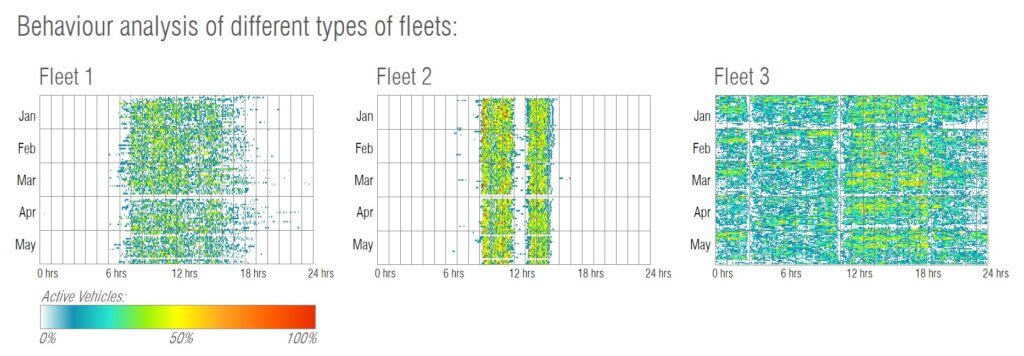Innovations in technology will play a vital part in sustaining growth in the reduction of carbon emissions globally. Presently, the transport sector alone contributes about 21% of all greenhouse gas (GHG) emissions worldwide. It is only wise that in other to combat this issue, we address the sectors of the world’s economies that make the most contributions, like transport. This is the main reason why we are seeing growing government support for the transition to electric vehicles (EVs) today.
However, the decision to shift to electric in the transport sector comes with some major concerns such as the tremendous amounts of energy from the grid required to power this increasing number of EVs. There is also a need for charging points around cities – and fast ones to reduce the time spent charging. Currently, there has been over 22500 plug-in chargers installed so far throughout the UK. Although, these chargers require users to connect a cable from the charger to the vehicle, and this can be inconvenient for some types of users, such as fast responders, taxi operators, and disabled drivers.
Therefore, wireless chargers could give users more convenience while charging because there is no need for plug-in cables. The flexibility that comes with wireless chargers means that they can be installed in areas where other chargers cannot. For example, they can be installed in traffic stops, bus stops, taxi queues and highways. This allows them to be used as range extenders, to give electric vehicles an increased reach. As mentioned in our previous blog, here are three forms of wireless electric vehicle charging (WEVC) namely,
- Static charging – the vehicle needs to be parked first, whether it is in a car park or a garage before charging can start.
- Semi-dynamic charging also referred to as opportunity charging is a flexible pattern of charging that allows users to easily get a quick charge while on a journey, without having to come to a total stop. For example, a transit bus can be charged several times in the course of its journey during its quick stops.
- Dynamic charging – vehicles travelling along the highways can receive boosts in their batteries state-of-charge (SOC) from WEVC systems installed on designated charging lanes.
As you might have heard, there are some dissatisfactions with the distance an EV can go on a full charge. So, depending on the automaker, a person embarking on a 400-mile journey from London to Edinburgh which should take about seven and a half hours would have to stop a few times during the journey to refill at a charging station. This process can be time-consuming, adding upwards of an hour to the trip. However, all that is needed in the case of dynamic wireless power transfer (WPT) is proper contact between the receiver pad placed underneath the vehicle and the transmitter pad installed on the pavement. This could allow vehicles to charge while driving (CWD) or engage in opportunity charging, giving the vehicle an extended range that can last throughout the journey. Hence, making the technology a feasible solution to the issue of range anxiety. Similarly, for the semi-dynamic WPT the vehicle could charge while waiting on the traffic lights or a bus stop.
Static wireless power transfer could allow the vehicles to charge while parking. This means that low-dwell time vehicles could benefit from this technology. As presented by Waldron et al. (2020), there are different user profiles, which would require different charging alternatives. In figure 1 is observed the simultaneous use of vehicles from three different fleets. Fleet 1 and 2 present a pattern of use during the day time, which could allow them to charge the vehicles overnight. Conversely, Fleet 3 operates 24/7 which means that the transition of this fleet to electric mobility would be more challenging as the vehicles would need to charge for shorter periods of time. Therefore, a static wireless power transfer would be an alternative for this type of users/vehicles.

Just as with most other innovations, this technology does come with some hindrances which draw its reliability into question. A study conducted by Nagendra (2017) showed that only 5% of all EVs are parked in full alignment with the charging pads, hence preventing an efficient transfer of power to the vehicle’s batteries. Also, as you may have already guessed, it would be almost impossible for the average driver speeding on a highway to control their vehicle in a way that will keep the transmitter and receiver pads aligned perfectly for charging to begin. Interoperability is another issue of major concern as you would not want to be faced with the problem of searching through various WEVC installations for the one that is compatible with your vehicle, or would you? A proper frame of standards across all wireless chargers will allow various EVs to charge at any WEVC bay independent of which company provides the equipment.
Transferring power wirelessly requires an invisible energy field having both electric and magnetic properties called an electromagnetic field (EMF), to be created between the source and receiver pads. When this happens, there could be a release of a harmful amount of electromagnetic radiation into the surroundings, depending on the quantity of power transferred. However, it is expected that WEVCs meet certain safety standards limiting the amount of EM radiation released into the surroundings to environmentally friendly levels, ensuring that the public is protected from harm. Also, the EMF generated could cause some serious health and safety concerns because it could interfere with medical devices that rely on WPT within the human body such as pacemakers. Although most of these issues have solutions that are currently being tested, cybersecurity to protect user’s personal data remains one not to be ignored because a major cyberattack could impact negatively on the public’s perception.
Wireless charging of electric vehicles offers many great opportunities too. It is difficult to imagine the stress persons with disabilities go through just to connect their EVs to charge. With wireless, charging would be simpler for them. Also, the technology could be a platform for the implementation of future technologies such as driverless vehicles, which would otherwise be impossible with plug-in chargers, because of the autonomy involved. This will be beneficial to persons with disabilities since they can take trips unassisted. Time is money in the taxi business, and wireless charging will save drivers the time they would spend leaving their queues for a charging station. The technology will allow them to charge while waiting in the queue for their next passengers. All these opportunities that exist with WPT technology will encourage higher adoption of EVs and aid the nation’s goals of reducing GHG emissions by 80% in 2050.
Project AMiCC is researching on many of the areas presented above, keep an eye on this blog to know more about our progress.
MSc. Eng. Chuma Ebere is a Research Associate working on the AMiCC project at the University of Nottingham.
Dr Julie Waldron is a Research Fellow at the University of Nottingham
Dr Sophie Naylor is a Research Fellow at the University of Nottingham

